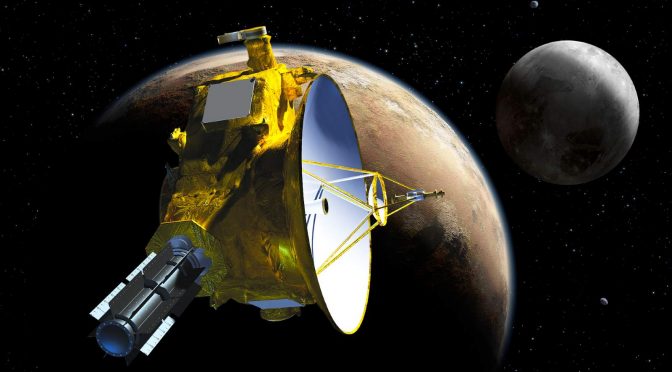It took 27 years, but finally, NASA’s New Horizons spacecraft beat Voyager 1‘s record for being farthest from Earth while capturing images. Taken on December 5, 2017, New Horizons’ image of the open star cluster NGC 3532 (also commonly known as the Football Cluster or the Wishing Well Cluster) became the farthest image ever made by any spacecraft, breaking a 27-year record set by Voyager 1. But for a very short time! About 2 hours later, New Horizons broke its own record with images of two Kuiper Belt objects.
For a short time, the image below, the New Horizons Long Range Reconnaissance Imager (LORRI) frame of the galactic open star cluster NGC 3532 (aka the Football Cluster or the Wishing Well Cluster), taken on December 5, 2017 (released on February 8, 2015), was the farthest image ever made by a spacecraft, breaking a 27-year record set by Voyager 1. New Horizons was 3.79 billion miles (6.12 billion kilometers or 40.9 astronomical units-AU – see notes 1) from Earth when LORRI took the routine calibration image.
New Horizons: the farthest spacecraft from Earth that captures images
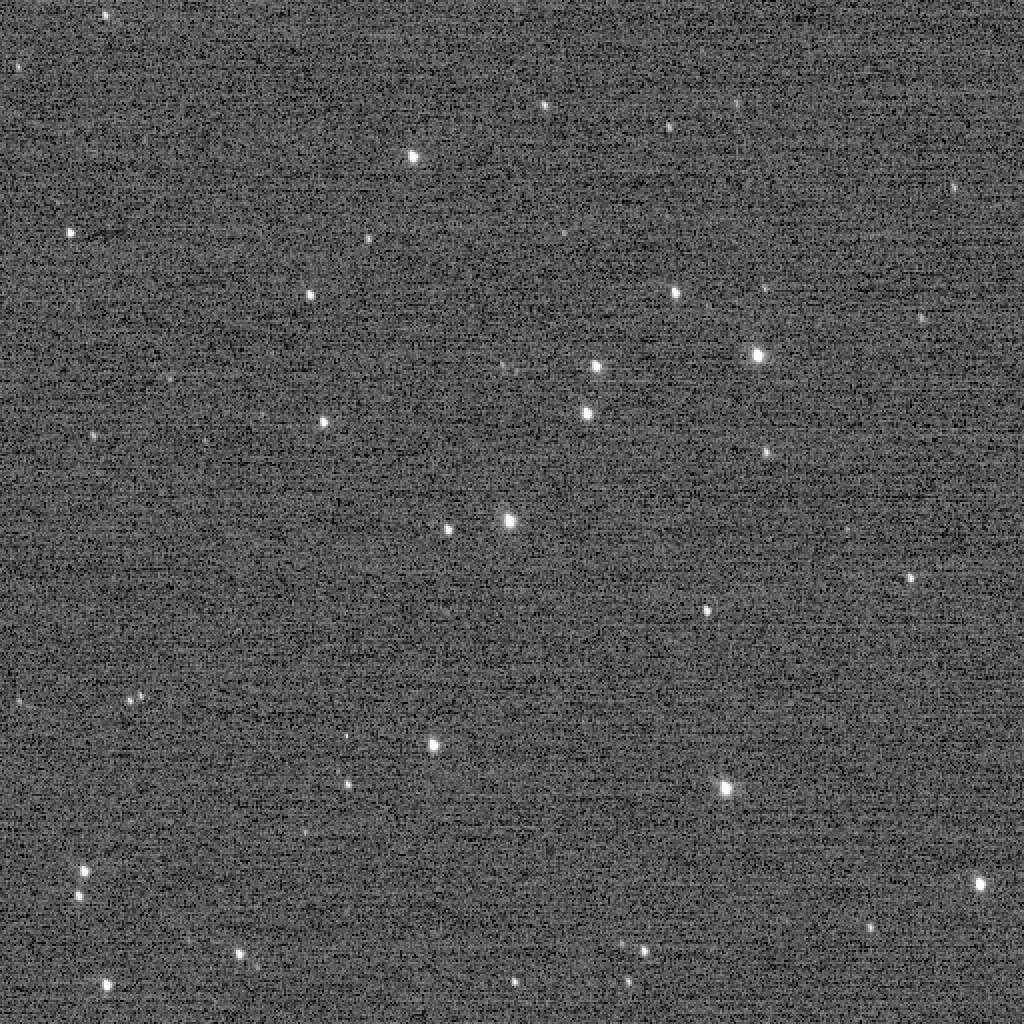
About two hours later, New Horizons broke the record again with images of two Kuiper Belt (see notes 2) objects. Released on February 8, 2018, this December 2017 false-color image of KBO 2012 HE85 below is, for now, one of the farthest from Earth ever captured by a spacecraft. At the time it was among the closest observations yet made of the mysterious, distant objects known as KBOs. New Horizons’ range to 2012 HE85 was only 32 million miles (51 million kilometers, or 0.34 AU) – closer than the planet Mars ever comes to Earth.
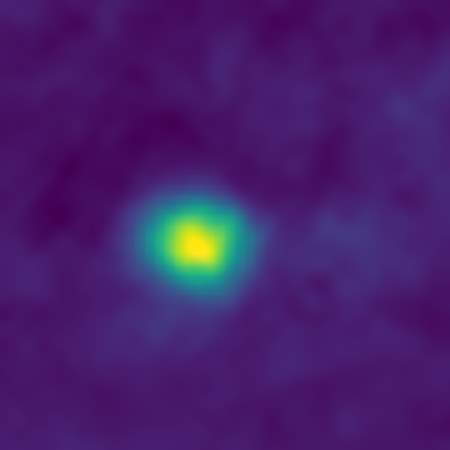
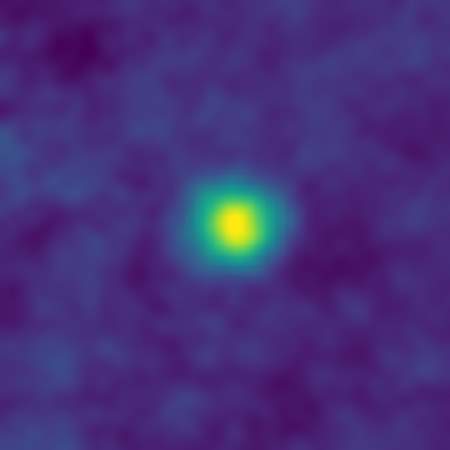
During its extended mission in the Kuiper Belt, New Horizons is aiming to observe at least two dozen Kuiper Belt objects (KBOs), dwarf planets, and “Centaurs,” former KBOs in unstable orbits that cross the orbits of the giant planets. With its Long Range Reconnaissance Imager (LORRI) New Horizons has observed several KBOs and dwarf planets at unique phase angles, as well as Centaurs at extremely high phase angles to search for forward-scattering rings or dust.
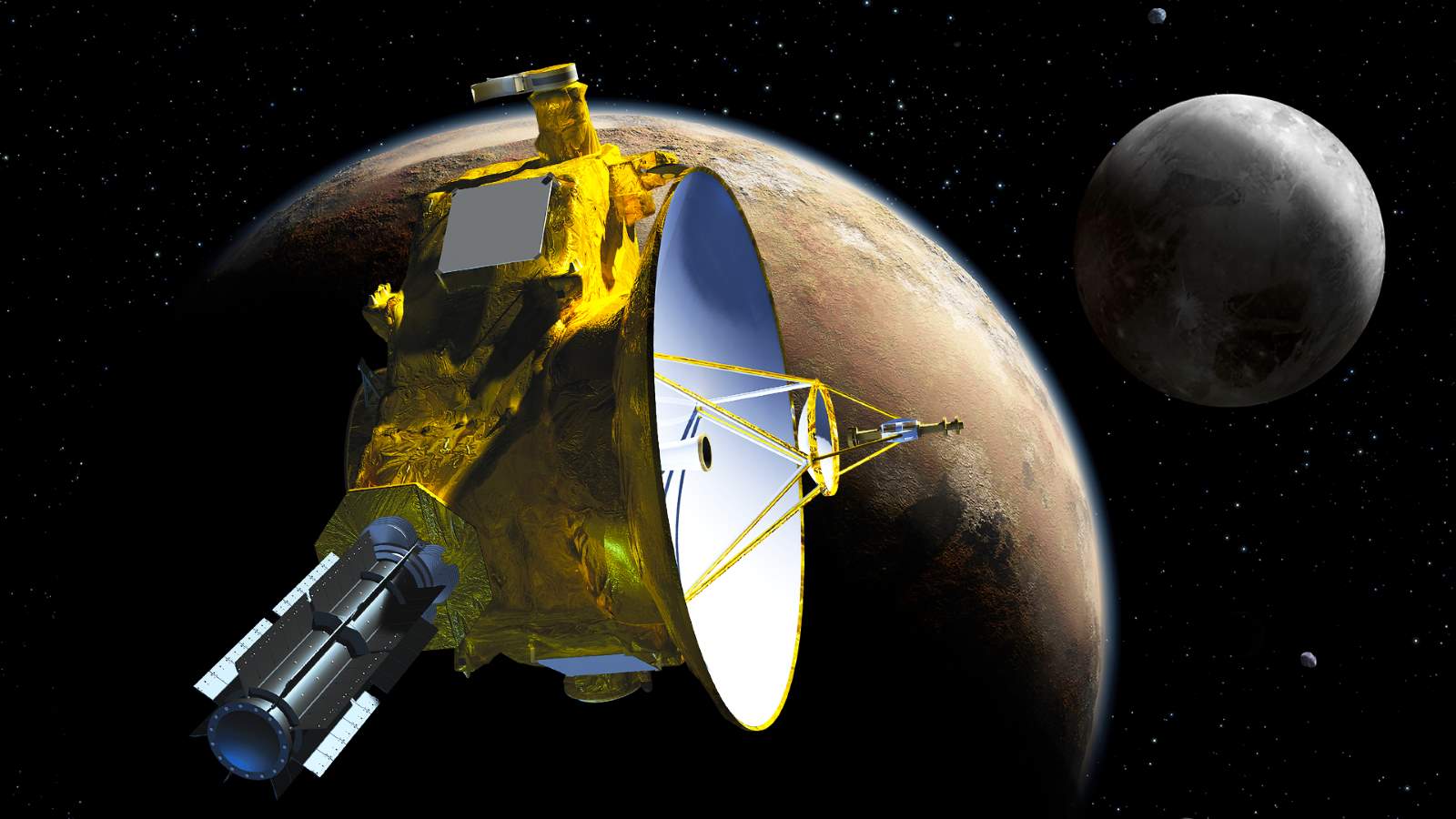
Previous record: Pale Blue Dot
In 1990, Voyager 1 spacecraft, which had completed its primary mission and was leaving the Solar System, was commanded by NASA to turn its camera around and take a photograph of Earth across a great expanse of space, at the request of Carl Sagan. Taken from a record distance of about 6 billion kilometers (3.7 billion miles, 40 AU) from Earth, the photo is known as the Pale Blue Dot. In the photograph, Earth is shown as a fraction of a pixel (0.12 pixel in size) against the vastness of space.
The “Pale Blue Dot” is still the farthest image of Earth we’ve ever taken.
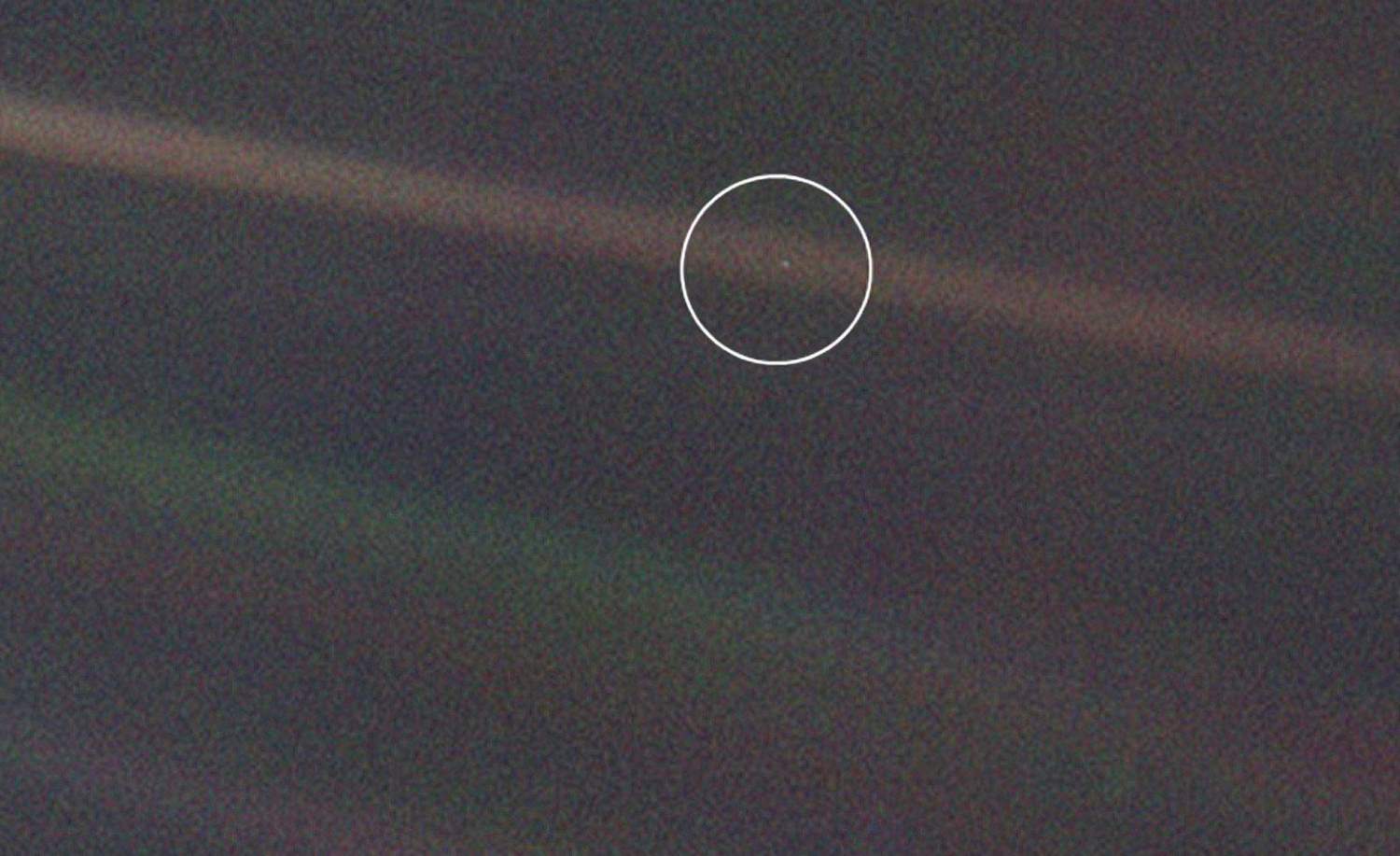
The Next “Pale Blue Dot”
Astronomers Are Already Planning for the Next “Pale Blue Dot”: New Horizons may eventually take a picture of Earth from its vantage point in the Kuiper Belt, but this will only happen after the spacecraft has completed all planned flybys of Kuiper Belt Objects (KBOs) and finished imaging Uranus and Neptune. The reason for this careful scheduling lies in the potential risk posed to its onboard cameras. Pointing the cameras toward Earth means also aiming them near the Sun, and because New Horizons’ cameras lack an active shutter mechanism, exposure to sunlight could cause irreparable damage to their sensitive detectors.
To ensure the success of its scientific objectives, mission planners have prioritized the exploration of KBOs and the outer planets over such an Earthward view. This cautious approach is crucial, as New Horizons continues to operate billions of kilometers from Earth, where repairs are impossible. A potential image of Earth from this vast distance, however, would not only be a technological achievement but also a poignant perspective, offering humanity a chance to see our planet from the distant reaches of the solar system, much like the famous Pale Blue Dot image taken by Voyager 1.
Such a photograph would symbolize the incredible journey of New Horizons, from its historic flyby of Pluto to its exploration of the Kuiper Belt, and serve as a reminder of our small yet significant place in the cosmos. But for now, ensuring the safety of its instruments and completing its primary scientific mission remain the top priorities.
More than three decades after the original, humanity will get another “Pale Blue Dot.”
Notes
- An Astronomical Unit (AU) is the average distance between Earth and the Sun, which is about 93 million miles or 150 million kilometers. Astronomical units are usually used to measure distances within our Solar System.
- The Kuiper belt occasionally called the Edgeworth-Kuiper belt, is a circumstellar disc in the outer Solar System, extending from the orbit of Neptune (at 30 AU) to approximately 50 AU from the Sun. It is similar to the asteroid belt but is far larger-20 times as wide and 20 to 200 times as massive. Like the asteroid belt, it consists mainly of small bodies or remnants from when the Solar System formed. While many asteroids are composed primarily of rock and metal, most Kuiper belt objects are composed largely of frozen volatiles (termed “ices”), such as methane, ammonia, and water. The Kuiper belt is home to three officially recognized dwarf planets: Pluto, Haumea, and Makemake. Some of the Solar System’s moons, such as Neptune’s Triton and Saturn’s Phoebe, may have originated in the region. The Kuiper belt was named after Dutch-American astronomer Gerard Kuiper, though he did not predict its existence. In 1992, 15760 Albion was discovered, the first Kuiper belt object (KBO) since Pluto and Charon. Since its discovery, the number of known KBOs has increased to over a thousand, and more than 100,000 KBOs over 100 km (62 mi) in diameter are thought to exist. The Kuiper belt was initially thought to be the main repository for periodic comets, those with orbits lasting less than 200 years. Studies since the mid-1990s have shown that the belt is dynamically stable and that comets’ true place of origin is the scattered disc, a dynamically active zone created by the outward motion of Neptune 4.5 billion years ago; scattered disc objects such as Eris have extremely eccentric orbits that take them as far as 100 AU from the Sun. The Kuiper belt is distinct from the theoretical Oort cloud, which is one thousand times more distant and is mostly spherical.
Sources
- Spacecraft snaps new farthest-from-Earth images on EarthSky.org
- NGC 3532 on Wikipedia
- “Wishing Well” Star Cluster on New Horizons “NASA’s Mission to Pluto and the Kuiper Belt” Web Site
- Kuiper Belt on Wikipedia
- Moon Landings: All-Time List [1966-2025] - February 2, 2025
- What Is Max-Q and Why Is It Important During Rocket Launches? - January 16, 2025
- Top 10 Tallest Rockets Ever Launched [2025 Update] - January 16, 2025
